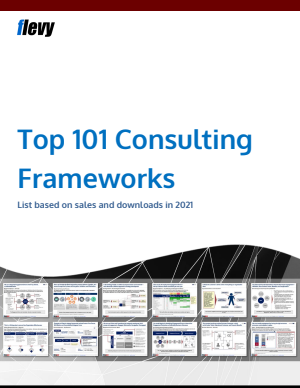5-Why Analysis (PowerPoint PPTX Slide Deck)
PowerPoint (PPTX) 21 Slides
BENEFITS OF THIS POWERPOINT DOCUMENT
- Quickly finds the root cause of a problem or eliminates suspected causes.
- Easy to construct and perform, requires no statistical analysis.
- Creates a logical path/understanding of the history, thought processes and root causes of a problem.
PROBLEM SOLVING PPT DESCRIPTION
5-Why Analysis Overview
Asking "Why?" is a common method for discovering the cause of many things. When structured into a methodology it becomes a simple, yet effective, tool. Very often, when seeking the reason for a problem, the answer will lead you to another question. It has been found that asking "why", typically around five times, is sufficient to peel away the layers of symptoms, thus leading to the root cause of a problem. The 5-Why tool is a structured method for discovering the cause-and-effect relationships for a specific problem. Asking the 5-Whys allows teams to move beyond symptoms and contributing factors to actual root causes.
What This Course Provides
This 20-page course provides learners with a thorough understanding of the terminology and methodology associated with 5-Why Analyses. It is presented in FranklinGood's comprehensive and highly visual learning format. This course will help learners end-to-end process steps and how to perform them. 5-Why problem-solving efforts require team involvement and guidance from a Team Leader (Facilitator). It includes a special section for the responsibilities of the Team Leader (Facilitator), it also has a video example of a 5-Why problem solving and 4 other examples to aid you and your team to complete and effective 5-Why effort.
One of several important factors of the 5-Why method is the ability to correctly ask the "why" question in a way that leads to discovery of root causes. The Team Leader (Facilitator) section provides this knowledge to effectively and efficiently construct the right questions, and how to conduct the problem-solving session. It also includes ground rules for working sessions and templates to facilitate the process.
This course further defines how the 5-Whys tool can augment other tools such as a Fishbone (also known as an Ishikawa or cause and effect diagram) or Process Mapping. For example, the output of the fishbone diagram finds many potential causes to a single event, defect or undesirable condition. The 5-Whys method can then be used to discover the root causes of the various potential causes found using the fishbone tool.
Learning Objectives
? Introduction to 5-Why methods.
? 5-Why Applications and Benefits.
? 5-Why Versatility.
? Facilitator Key Roles.
? Facilitator Knowledge and Skills Development.
? Performing the 5-Why Team Session.
? Video of 5-Why in action.
? 5-Why Examples.
? 5-Why Template.
Benefits of the 5 Why Method
? Quickly finds the root cause of a problem or eliminates suspected to construct and perform, requires no statistical analysis.
? Works well in a team setting.
? Augments the use of the fishbone/cause and effect/Ishikawa tool.
? Creates a logical path/understanding of the history, thought processes and root causes of a problem.
When Is 5 Why Most Useful?
? As a single problem-solving effort or as a part of another improvement effort, i.e. Kaizen, Lean, LSS, etc.
? When problems involve human factors or interactions.
? When people with personal knowledge of the processes or systems are involved in the 5-Why effort.
Train the Trainer Services
Train the Trainer services can be conducted via virtual or on-site for this course. Please request details and pricing by emailing your request to:
Got a question about the product? Email us at support@flevy.com or ask the author directly by using the "Ask the Author a Question" form. If you cannot view the preview above this document description, go here to view the large preview instead.
Source: Best Practices in Problem Solving, 5 Whys PowerPoint Slides: 5-Why Analysis PowerPoint (PPTX) Presentation Slide Deck, FranklinGood









